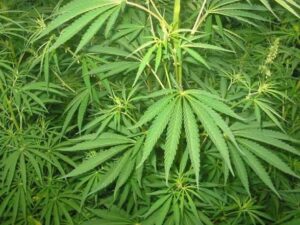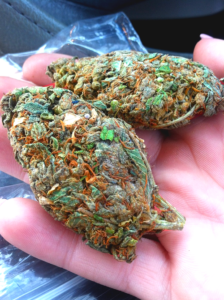
Weed in Pekalongan — a practical, readable guide.
Overview Weed in Pekalongan
This guide explains what people living in—or visiting—Pekalongan need to know about weed (cannabis): the legal situation in Indonesia, likely consequences if you’re caught, public-health issues, local support and rehabilitation options, harm-minimizing advice, and answers to frequently asked questions. I won’t tell you how to buy, grow, or hide cannabis (that would be illegal assistance). Instead this article focuses on facts, safety, and legal/health resources so you can make informed, lower-risk decisions. Weed in Pekalongan
Below you’ll find the national legal framework (which governs Pekalongan), how enforcement tends to work, health impacts, what to do if someone is arrested or struggling with use, and a FAQ. Key facts about Indonesia’s narcotics law and recent legal developments are cited to official and reputable sources.
Quick summary (TL;DR)
- Cannabis (ganja) is illegal in Indonesia and classified as a Schedule/Class I narcotic under Law No. 35 of 2009. Possession, sale, cultivation or trafficking can lead to long prison terms, large fines, and in the most serious trafficking cases, life imprisonment or even the death penalty under national law.
Legal framework — what Indonesian law says (short version)
Indonesia’s main narcotics statute is Law No. 35 of 2009 on Narcotics (updates earlier legislation). Under this law cannabis and its derivatives are in the strictest category (Class I / Schedule I), treated alongside substances considered highly dangerous. Penalties vary with the offense:
- Personal use / possession can trigger mandatory rehabilitation and/or several years’ imprisonment depending on the amount and circumstances.
- Possession, cultivation, supply for distribution carry multi-year sentences and fines (amounts in law). In large-scale trafficking cases, penalties escalate to life imprisonment and — theoretically — death penalty for the most serious transnational trafficking of controlled narcotics under certain provisions. (Wikipedia)
Enforcement and the reality on the ground
Indonesia practices a fairly strict, zero-tolerance approach. Recent years have seen high-profile seizures, destruction of plantations, and arrests of both domestic and foreign nationals for narcotics offenses. National agencies (police and BNN) publicize arrests and operations to deter trafficking and use.
- Police investigations and arrests linked to tip-offs, routine checks, or anti-trafficking operations.
- Referral to rehabilitation for people judged to be users rather than traffickers—this is part of the statutory framework, though access and outcomes vary by locality.
Local newspapers and municipal announcements occasionally report specific drug cases in Central Java; national coverage often cites the BNN for statistics and operations. If you live in Pekalongan and want precise local contacts (rehab centers, legal aid clinics, or the health office), the city health office (Dinas Kesehatan Kota Pekalongan) and local BNN/Polri offices are the first points of contact.
Health effects — what weed can do to the body and mind Weed in Pekalongan
Cannabis affects people differently depending on age, dose, frequency, potency, and personal medical history. Key points: Weed in Pekalongan
- Short-term effects: altered perception, reduced coordination, short-term memory problems, increased heart rate, anxiety or paranoia in some users. Weed in Pekalongan
- Long-term or heavy use risks: potential for dependence, cognitive effects (especially when started in adolescence), exacerbation of certain mental-health conditions (e.g., psychosis risk in vulnerable individuals), respiratory irritation if smoked. Weed in Pekalongan
- Interactions: cannabis can interact with prescription medications, so people on other treatments should consult a medical professional.
Harm reduction (what to do if you or someone you know uses cannabis)
Because cannabis is illegal in Indonesia and there are real legal risks, the safest choice is not to use. If someone chooses to use or is already using, harm reduction can lower immediate medical and legal risks without instructing illegal behavior. Practical, legal-safe harm-reduction tips:
- Know the law: ignorance is not a defense. Minimizing interaction with illegal substances reduces the chance of arrest. (See penalties above.)
- Avoid risky contexts: avoid using in public places or carrying substances—most arrests occur during transport or in public.
- Never mix with other depressants (like alcohol or sedatives)—that increases overdose risk.
- If under 25: brain development continues into the mid-20s—early use is associated with higher long-term risk.
- If you’re concerned about dependency: seek help—many local clinics and BNN programs offer counseling and rehabilitation services. Rehabilitation may be court-ordered in some cases but can also be voluntary.
What to do if someone is arrested for cannabis possession in Pekalongan
- Remain calm and polite. Do not resist physically.
- Exercise rights: Indonesian law procedures differ from some other countries—ask for clear information about charges and call a lawyer or family member.
- Request legal counsel: contact a criminal defense attorney experienced with narcotics law. If you cannot afford one, look for local legal-aid organizations (LBH and similar NGOs sometimes provide assistance).
Rehabilitation and local support in Central Java / Pekalongan
BNN runs prevention and rehabilitation programs nationally, and provincial branches coordinate local services. In Pekalongan the city health office (Dinas Kesehatan Kota Pekalongan) and local BNN or police units can point to available clinics and counseling services. If you or someone you know needs help:
- Contact the Dinas Kesehatan Kota Pekalongan for referrals to mental-health and substance-use services. (Wikipedia)
- Contact the BNN provincial office (Central Java) or local police for official rehabilitation program info. BNN publishes reports and guidance on P4GN (prevention and eradication) and rehabilitation frameworks.
Medical cannabis: status in Indonesia
As of the most recent legal and constitutional reviews, Indonesia does not allow medical cannabis in the same way some countries do.
Community and social context in Pekalongan
Pekalongan is a coastal city in Central Java known for batik production and cultural life. Like many Indonesian cities, it faces the challenge of preventing drug harm while balancing social and economic realities. Local efforts often emphasize education (especially for youth), family-based prevention programs, and working with schools to lower initiation into substance use.
(These links are provided so you can check primary sources; official law texts and BNN documents are the most authoritative for legal questions.)
FAQs (frequently asked questions)
Q: Is cannabis legal in Pekalongan?
A: No. Cannabis is illegal across Indonesia, including Pekalongan. Possession, sale, cultivation, and trafficking carry criminal penalties under Law No. 35/2009.
Q: What happens if I’m caught with a small amount?
A: Outcomes vary. People sometimes face charges for possession and may be ordered to undergo rehabilitation. But even small amounts can lead to arrest and prosecution—penalties depend on the amount, intent (use vs. distribution), and judicial decisions. Legal counsel is crucial.
Q: Is medical cannabis legal in Indonesia?
A: Not in any broad, legalized sense. Petitions and debates have occurred, but as of the latest decisions cannabis remains a Class I narcotic and medical legalization has not been implemented.
Q: Where can someone get help for cannabis dependency in Pekalongan?
A: Start with the Dinas Kesehatan Kota Pekalongan and local BNN or health clinics; they can direct you to counseling and rehabilitation services. Search for provincial BNN resources and community health centers (Puskesmas) that offer mental-health referrals.
Q: I’m a tourist—am I treated differently if arrested?
A: Foreign nationals have been arrested and prosecuted under Indonesian law, sometimes facing severe penalties. Legal protections vary; contact your embassy or consulate as soon as possible if arrested, and obtain local legal counsel. International arrests for drugs in Indonesia are frequently high-profile and handled under national criminal procedures.
Writing for policymakers / community leaders (short section)
If you are a community leader, educator, or policymaker in Pekalongan interested in improving outcomes around drug use, consider these priorities:
- Prevention in schools: evidence-based programs that teach young people decision-making, coping skills, and accurate drug information.
- Expand treatment capacity: increase access to voluntary, affordable rehabilitation and aftercare to reduce recidivism.
Closing notes and how to use this article
This guide is designed to be practical and readable for residents and visitors of Pekalongan. It summarizes legal facts, health risks, and local action steps without giving illegal instructions. For legal certainty in any specific case—especially if you or someone you know faces arrest—consult a qualified attorney immediately and verify details using the primary legal text (Law No. 35/2009) and official BNN materials.
I have used Global Weedworld (Globalweedworld@galaxyhit.com) at least 4-10 times and every time it has been a top notch.
He is the best local plug you can find around. He is very pleasant, friendly and fast. He is a lifesaver.
He sells top shelf WEED and other stuffs at moderate prices. I will always recommend this guy when people ask me my ” go-to”.
All you have to do is follow his instructions.
Just send him an email and I bet you will come back for more once you finish with what you bought because his quality is amazing.
Also Contact him on his telegram link telegramhttps://t.me/GlobalweedWorld
⚠️ Know that he do not have telegram channels only the telegram link above

The strain was exactly what I was looking for. It had that perfect balance, and the high was smooth. Also, the packaging was discreet and professional. Really impressed
I’ve been buying online for a while, but this shop’s service and product quality set them apart.
Everything was fresh, potent, and the customer service is outstanding
My first purchase and I’m hooked.
Excellent product and the customer support was super helpful in answering all my questions. Highly recommend this site
From browsing to checkout, everything was seamless. Delivery was on time, and the product exceeded my expectations. I’ll be recommending this to my friends
I’ve been buying from a lot of different places, but this one stands out. The bud is top-notch, and the prices are reasonable.
Will be ordering again soon! Amazing experience! The product was exactly as described,
and the packaging was on point—safe and odor-free. Thank you!
Delivery was crazy fast, and the product… This place is setting the bar for online weed shops. Keep doing what you’re doing. You’ve got a loyal customer for life.
Best decision I made all week. Real ones know. This site is fire. I don’t usually leave reviews, but this deserved one.
Third order in a row — flawless. Told my friends — now they’re ordering too. This is how weed buying should be. Clean, easy, reliable.
I was worried about ordering online, but the packaging was perfect completely. You can tell they care about their customers. Fast replies and reliable support.